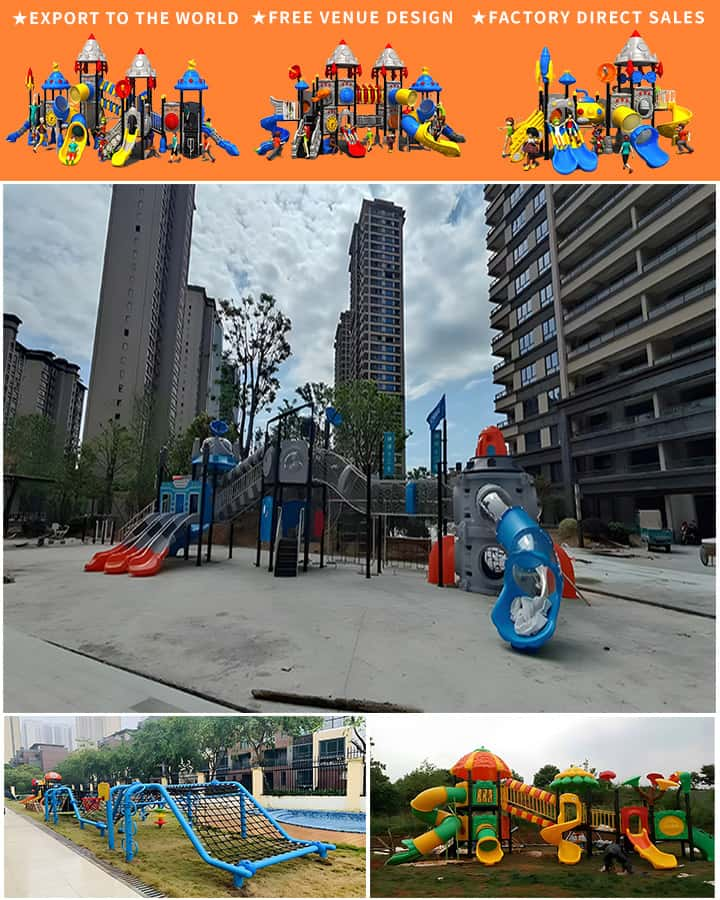Designing an outdoor playground for toddlers is a delightful and rewarding endeavor that can significantly enhance their physical development, creativity, and social skills. An ideal playground should be both fun and safe, offering a variety of activities to engage young children while ensuring their well-being. Here is a comprehensive guide to help you design the perfect outdoor playground for your little ones.
Safety First
When it comes to toddlers, safety is paramount. Ensure the playground is enclosed by a secure fence with a locked gate to prevent wandering. The surface should be soft yet durable, such as rubberized mulch or wood chips, to cushion falls effectively. All equipment must meet national safety standards and be free of any sharp edges or pinch points that could injure tiny hands.
Age-Appropriate Equipment
Swings
Swings are a classic playground favorite but need to be age-appropriate for toddlers. Opt for low-hanging, wide bucket swings or small belt swings that offer stability and security. Make sure the chains or ropes are covered in plastic tubing to protect tiny fingers.
Climbing Structures
Climbing is a great way for toddlers to build strength and coordination. Choose climbing structures with easy access and simple designs, such as small slides with built-in steps or gentle ramps. Ensure all platforms and ladders have handrails to assist young climbers.
Sandboxes

A sandbox offers endless creative possibilities and helps develop fine motor skills. Select a shallow, round sandbox with a lid to keep the sand clean when not in use. Consider adding sand toys like shovels and molds to spark imaginative play.
Water Play
Water tables or small splash pads are wonderful for sensory exploration during hotter months. Ensure water features are shallow—no deeper than one inch—and have smooth edges. Always supervise closely to ensure safety.
Educational Elements
Incorporating educational elements into the playground design can make playtime even more enriching. For instance:
Chalkboard Wall
A chalkboard wall allows children to express their creativity through drawings and writings. It can also serve as a learning tool for practicing letters, numbers, and shapes.
Interactive Panels
Interactive panels featuring buttons, levers, and gears can teach cause-and-effect relationships and improve problem-solving skills. These panels can be integrated into the playground structure itself for seamless integration.
Social Interaction
Toddlers learn a lot from interacting with their peers. Design the playground to encourage group play with structures that allow multiple children to use them at once. A seesaw or a small carousel can promote cooperative play and social interaction.
Natural Elements
Incorporating natural elements like grassy patches, flower beds, and shade trees can make the playground more inviting. These elements not only look beautiful but also provide opportunities for nature exploration, teaching toddlers about plants and insects in a hands-on way.
Maintenance and Upkeep
Regular maintenance is crucial to keep the playground safe and enjoyable. Inspect equipment weekly for signs of wear and tear, and repair any damages promptly. Keep the area clean of debris and check the sandbox for contaminants regularly.
Conclusion
Creating an outdoor playground for toddlers involves thoughtful planning and attention to detail. By prioritizing safety, incorporating age-appropriate and educational elements, and encouraging social interaction, you can create a space where young children will thrive physically, intellectually, and emotionally. Whether it’s a simple sandbox or a complex climbing structure, the key is to make it engaging and safe. Happy playing!




